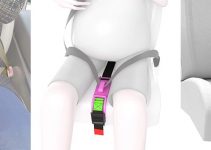
Toddlers and newborns alike are often vulnerable to irritation and rash due to prolonged diaper changes, infectious diarrhea, or sensitivities to certain foods. Parents seeking out various remedies usually come across over-the-counter drugs like Mylanta and wonder if they are safe and effective for their babies.
Disclaimer: This post might contain affiliate links. In case you buy through these links, we might receive a small commission, which helps us operate this website. Learn more here.
Can you use Mylanta for diaper rash?
The simple answer is yes: Mylanta is safe to use and, in fact, a highly effective remedy that soothes the discomfort from diaper rash immediately while the skin is treated gradually.
It is common for first-time users to have doubts since Mylanta was manufactured to relieve patients of stomach pain due to heartburn, acid reflux, or gas, and has several side effects if taken regularly.
However, there are no negative effects to applying powdered Mylanta on the skin, as long as your eyes don’t come in contact with it.
Moreover, we recommended avoiding Mylanta’s Mint flavor as it can sting sometimes when it comes in contact with the skin.
How should I apply Mylanta for quick relief from diaper rashes?
There are three ways you can use Mylanta depending on the availability of certain products and the severity of diaper dermatitis:
1. Cleanse the affected area so it is dry before applying a layer of ointment containing zinc oxide (e.g., Destin rapid relief or Destin maximum strength), and then pour some liquid Mylanta over the cream. Additionally, cornstarch can be sprinkled so that your baby’s skin remains dry.
2. Another way is to make a paste by mixing equal parts of Mylanta, zinc oxide ointment, and any diaper rash soothing cream. This paste can be stored in the refrigerator for added cooling effect and long-term use.
3. For diaper rashes caused by diarrhea and loose stools, it is best to clean the area gently and then apply a mix of petroleum jelly, like Aquaphor and Mylanta, to it.
What are alternative remedies that can be used to treat diaper rash?
 Other home remedies parents can try to soothe the discomfort caused by diaper rashes include;
Other home remedies parents can try to soothe the discomfort caused by diaper rashes include;
Aloe Vera Gel
This is an easily available and affordable product that stays in place and does not only help relieve the irritation but also heals the dermatitis with the help of antioxidants. All one needs to do is dab a small amount of the gel on the affected area after each diaper change.
Baking Soda
While this might be a surprising recommendation, baking soda has a high alkaline content, which neutralizes acidity and kills any bacteria that may form as a result of the rash. Using a soft cloth to apply a paste of two tablespoons of baking soda and warm water can heal the sore skin instantly.
Cornstarch
For those worried about their babies’ sensitive skin, cornstarch is an organic, moisture-absorbing remedy available in most staple pantries. After cleaning the inflamed area, sprinkling cornstarch over it provides an analgesic effect, and it forms a barrier between the diaper and your child’s skin.
Oatmeal Baths
Oatmeal baths are suitable for, and often prescribed by doctors to, both infants and adults who require skin hydration. Commercial products are also available, but one can also conveniently grind the oats until they readily absorb water and then add the fine powder to a bathtub.
Regularly soaking for 15 to 20 minutes in the milky water and gently rubbing the dry skin can cure most cases of eczema, rash, and allergies.
Natural Diaper Rash Creams
If you want to skip the preparation step, there are many rash creams and ointments available in the market from brands such as Burt’s Bees and Weleda. These contain natural ingredients, so there are no side effects to applying them on even the most sensitive babies’ skins.
What are some tips to prevent frequent diaper rashes?
Frequent Diaper Changes

Most dry skin conditions are not caused by diapers themselves but due to leaving wet or soiled diapers on for too long. Babies’ sensitive skin cannot tolerate being in contact with moisture for too long, which is why they break out into rashes, sores, and inflammations.
This is also the reason for an increase in diaper rash when your child has loose stools or diarrhea. Therefore, it is important to change your children’s diapers every 2-3 hours to reduce the risk of diaper dermatitis.
Gentle Cleansing
Keeping the affected area clean does not refer to vigorous scrubbing with soaps, which could strip away the protective barrier of your infant’s skin. Instead, sit your baby in a basin or tub filled with lukewarm water, which could help relieve the soreness caused by the rashes, and use mild soaps only when necessary.
Minimizing the use of diaper wipes will also significantly reduce the inflammation and burning sensation associated with rashes.
Finding the Right Diaper Size
Most parents are unaware that the right diaper fit is not one that tightly clings to your baby’s skin but is secure and still allows them to move comfortably. The fastened diaper should leave room for airflow and avoid friction with the skin so it is protected from breakouts.
It is best not to pick out plastic or tight-fitted diaper covers when shopping for your infant or toddler.
Diaper-Free Time
Keeping your baby’s skin dry is a very important factor in preventing frequent skin allergies; therefore, exposure to air or pat drying is recommended after a diaper change. The baby can be laid on a large towel or cloth when their diaper is off to avoid mess. Parents who use disposable diapers should remember to punch holes in them for better airflow.
Conclusion
Diaper rashes are often an unavoidable part of an infant and toddler’s early years, but the discomfort that comes with it can be relieved through various natural, fragrant-free products and home remedies. Lastly, parents should always test a new ointment or paste on a small patch before applying it to the inflamed area to avoid worsening the symptoms.



